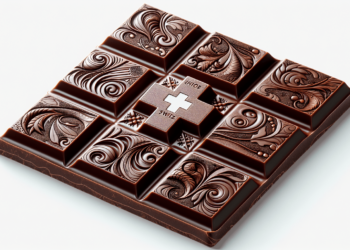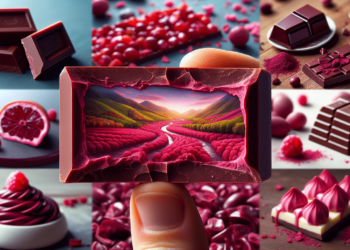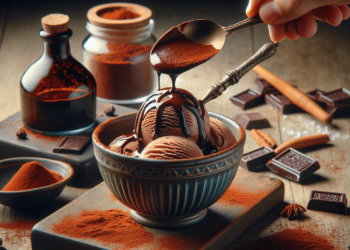You’re a chocolate lover, always on the search for the sweetest treat. But have you ever wondered which type of chocolate is the absolute sugar bomb? Well, look no further, because in this article, we’ll reveal the truth about the chocolate varieties that will satisfy your sweet tooth like no other. So grab your favorite chocolate bar and get ready to indulge in some mouthwatering facts about the different types of chocolate and their sugar content. Prepare to be surprised!

Milk Chocolate
Milk chocolate is a popular and delightful treat loved by many. It is made by combining cocoa solids, cocoa butter, sugar, milk or milk powder, and sometimes additional flavorings. The processing of milk chocolate involves several steps to ensure its smooth texture and delicious taste. First, the cocoa beans are harvested, fermented, and dried. Then, the beans are roasted to develop their rich flavors. After roasting, the beans are ground into a paste called chocolate liquor. The chocolate liquor is then mixed with milk powder, sugar, and cocoa butter to create the delectable milk chocolate we all know and love.
Sugar Content in Milk Chocolate
The sugar content in milk chocolate plays a crucial role in its overall taste and sweetness. Typically, milk chocolate contains a significant amount of sugar to balance out the bitterness of cocoa and create a pleasant flavor profile. The exact sugar content may vary depending on the brand and recipe, but a typical milk chocolate bar can have around 40-60% sugar content. When you indulge in a piece of milk chocolate, the higher sugar content gives it a smooth and creamy texture that melts in your mouth, making it a delightful treat for your taste buds.
White Chocolate
White chocolate is often misunderstood and sometimes even debated on whether it can be considered real chocolate. Despite its different appearance, white chocolate is indeed a variant of chocolate. It is primarily composed of cocoa butter, sugar, and milk solids or powder. The cocoa butter gives white chocolate its creamy and luxurious texture, while the absence of cocoa solids gives it the distinctive pale color.
Composition of White Chocolate
As mentioned earlier, white chocolate primarily consists of cocoa butter, sugar, and milk solids or powder. The absence of cocoa solids, which are responsible for the intense chocolate flavor, gives white chocolate its unique taste. White chocolate has a smooth and velvety mouthfeel due to its high cocoa butter content. The rich buttery taste, sweetness from the sugar, and the subtle flavors of milk make white chocolate an irresistible treat.
Sugar Content in White Chocolate
When it comes to the sugar content in white chocolate, it tends to be relatively high compared to other varieties. The absence of cocoa solids means that white chocolate relies heavily on sugar for its flavor and sweetness. On average, white chocolate can have a sugar content ranging from 50-60%. The higher sugar content contributes to its sweet and indulgent taste, making it a favorite for those with a sweet tooth.
Dark Chocolate
Dark chocolate is often celebrated for its rich and intense flavor. It contains a higher percentage of cocoa solids compared to other types of chocolate, along with cocoa butter, sugar, and sometimes vanilla for added depth of flavor. The composition of dark chocolate gives it a distinctively bitter taste that is loved by many chocolate connoisseurs.
Composition of Dark Chocolate
Dark chocolate is composed of cocoa solids, cocoa butter, sugar, and sometimes vanilla. The higher percentage of cocoa solids in dark chocolate results in a more pronounced chocolate flavor. The bitterness is a result of the reduced sugar content compared to milk chocolate. The cocoa butter contributes to the smooth texture of dark chocolate, providing a satisfying bite.
Sugar Content in Dark Chocolate
Dark chocolate typically has a lower sugar content compared to other types of chocolate. The bitterness of dark chocolate comes from its reduced sugar content. While the exact sugar content may vary depending on the percentage of cocoa solids and the brand, dark chocolate usually contains around 20-40% sugar. The lower sugar content allows the rich chocolate flavors to shine through, making dark chocolate a favorite choice for those who enjoy a more intense chocolate experience.
Semi-Sweet Chocolate
Semi-sweet chocolate falls between dark and milk chocolate in terms of sweetness. It strikes a balance between the intense flavors of dark chocolate and the smoothness and sweetness of milk chocolate. Semi-sweet chocolate has a slightly higher sugar content compared to dark chocolate but less than milk chocolate, giving it a distinctive taste loved by many.
Composition of Semi-Sweet Chocolate
The composition of semi-sweet chocolate closely resembles that of dark chocolate. It contains cocoa solids, cocoa butter, sugar, and sometimes vanilla. However, semi-sweet chocolate generally has a higher sugar content than dark chocolate, providing a more balanced and slightly sweeter flavor.
Sugar Content in Semi-Sweet Chocolate
The sugar content in semi-sweet chocolate is higher than dark chocolate but lower than milk chocolate. The exact sugar content may vary depending on the brand and recipe. On average, semi-sweet chocolate contains around 35-50% sugar. The increased sugar content provides a touch of sweetness to balance out the bitterness of cocoa, creating a delightful and indulgent taste.
Bittersweet Chocolate
Bittersweet chocolate, often used in baking and cooking, is known for its strong and bold flavors. It is similar to dark chocolate but contains an even higher percentage of cocoa solids, resulting in a more pronounced and intense taste. Bittersweet chocolate has a deep, complex flavor profile that appeals to chocolate enthusiasts.
Composition of Bittersweet Chocolate
Bittersweet chocolate is primarily composed of cocoa solids, cocoa butter, and sugar, with little to no added milk solids or powder. The absence of milk solids contributes to its rich and robust taste. Bittersweet chocolate often contains a higher percentage of cocoa solids, typically above 70%, which sets it apart from other types of chocolate.
Sugar Content in Bittersweet Chocolate
With its focus on the strong flavors of cocoa, bittersweet chocolate has a lower sugar content compared to other varieties. On average, bittersweet chocolate contains around 10-30% sugar. The reduced sugar content allows the intense flavors of cocoa to shine, giving bittersweet chocolate its signature bold taste.

Cacao Percentage and Sugar
The cacao percentage in chocolate refers to the amount of cocoa solids present in the product. The higher the cacao percentage, the greater the intensity of the chocolate flavor. Cacao percentage also plays a role in determining the sugar content of the chocolate.
Relation between Cacao Percentage and Sugar Content
As the cacao percentage increases, the sugar content in chocolate tends to decrease. This is because higher amounts of cocoa solids provide more natural sweetness, reducing the need for additional sugar. Dark chocolate, with its higher cacao percentage, generally has a lower sugar content compared to milk and white chocolate.
Impact of Cacao Percentage on Sugar Content
The impact of cacao percentage on sugar content is significant. Dark chocolate with a higher cacao percentage, such as 70% or 85%, contains less sugar compared to milk chocolate with a lower cacao percentage. This makes dark chocolate a favored choice for those looking to limit their sugar intake while still indulging in the rich flavors of chocolate.
Variations within Chocolate Brands
Within each chocolate brand, there are often different flavors and additives offered to cater to various tastes and preferences. These variations can impact the sugar content of the chocolates.
Different Flavors and Additives
Chocolate brands often offer a range of flavors and additives to appeal to a diverse audience. Popular variations include fruit flavors, nuts, caramel, and even spices. These additions can enhance the taste and texture of the chocolate but may also increase the sugar content. It’s important to read the label or product information to determine the level of sugar in flavored or additive-filled chocolates.
Impact on Sugar Content
The impact of different flavors and additives on the sugar content varies depending on the specific ingredients used. Some additions, such as fruit, may add natural sugars to the chocolate, while others, like caramel, can significantly increase the sugar content. When choosing flavored chocolates, be mindful of the potential impact on sugar intake and consider opting for options with lower sugar content if desired.
Popular Chocolate Brands and Sugar Content
Popular chocolate brands have their unique recipes and formulations, resulting in varying sugar contents across different products. It’s essential to be aware of these differences, especially for individuals conscious of their sugar intake.
Comparison of Sugar Content
When comparing the sugar content of popular chocolate brands, it’s important to consider the specific product and its cacao percentage. Milk chocolate, for instance, generally has a higher sugar content compared to dark chocolate. Brands may offer different variations with varying cacao percentages, which ultimately affects the overall sugar content.
Brands with Highest Sugar Content
While sugar content can vary among different products within a brand, some brands are known for producing chocolates with higher sugar content. These brands often cater to consumers who prefer sweeter chocolates. When choosing your chocolate, consider the brand’s reputation for sugar content and select the option that aligns with your taste preferences and dietary needs.
Sugar-Free or Low-Sugar Chocolate Alternatives
For individuals looking to reduce their sugar intake or avoid it altogether, there are options available in the form of sugar-free or low-sugar chocolate alternatives. These alternatives provide a guilt-free way to satisfy your chocolate cravings while keeping your sugar consumption in check.
Options for Reduced Sugar Intake
Sugar-free or low-sugar chocolate alternatives are typically sweetened with sugar substitutes like stevia, erythritol, or monk fruit extract. These alternatives aim to provide the sweetness and flavor of chocolate without the excess sugar. It’s important to note that while these alternatives may have reduced sugar content, they should still be consumed in moderation as they may contain other forms of carbohydrates or fats.
Quality and Taste Considerations
When exploring sugar-free or low-sugar chocolate alternatives, it’s essential to consider the quality and taste of the product. Some alternatives may have a different texture or aftertaste due to the absence or reduction of sugar. Researching and trying different brands can help you find alternatives that align with your taste preferences and meet your dietary requirements.
Conclusion
In conclusion, the sugar content in chocolate varies depending on the type, brand, and recipe. Milk chocolate typically has a higher sugar content to balance the bitterness of cocoa, while dark chocolate has a lower sugar content, allowing the intense flavors of cocoa to shine. White chocolate offers a smooth and velvety taste with a relatively high sugar content. Semi-sweet chocolate provides a balanced sweetness between dark and milk chocolate. Bittersweet chocolate, with its high cocoa content, offers a bold taste with reduced sugar. Cacao percentage plays a role in determining the sugar content, as higher percentages tend to result in lower sugar content. Different flavors and additives within chocolate brands can impact the sugar content, so it’s important to read the labels when choosing variations. When looking for alternatives with reduced sugar, sugar-free or low-sugar options can be considered, but quality and taste should be taken into account. With this comprehensive understanding of chocolate types and sugar content, you can make informed choices that align with your personal preferences and dietary goals.





